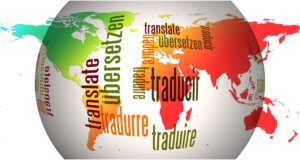Startups and small businesses can find excellent success if the product line can be expanded to the international market. Selling physical products overseas can be a major challenge due to regulations and shipping problems. But digital products don’t need to be shipped and regulations largely mirror the ones in the U.S. If you are thinking about selling to an international customer audience, here are several tips to follow:
Table of Contents
Design Product Placement Pages with an International Audience in Mind
Don’t send international customers to the regular U.S. product pages. Design separate product pages for potential international customers. You can set up auto redirects from the U.S. page to country page depending on where the user is coming from. Country pages should be specially customized. For example, if you are redirecting a customer to a country page in France, you should have all the text on the page translated to French. Do not rely on Google Translate to do this. Find reputable translation and localization services to make your product pages coherent and understandable to an international customer.

Display Prices in Local Currency
Get rid of the dollar values for the international product pages and show values in local currencies. You can include auto currency exchange calculations. But it’s best to decide on prices for various international markets and display them. The currency exchange calculator may generate weird prices with a lot of decimals.
Change Images to Suit Local Audiences
What sort of slogans and images are being displayed on your site’s home page and product pages? Slogans you can translate with the help of professional linguists. But you will have to decide which images to keep and which to change. If images you have chosen pose cultural issues, you will need to change those for international audiences.
Set Up International Customer Support
Set up a separate line of customer support for international audiences if you can afford it. It’s highly worthwhile if you get many international customers. You may need customer reps who can speak more than English. Offer customer service in the languages of the main international audiences. You will have to translate all supporting documents during this process. Invest in technical translation services for this.
Expanding internationally is a major project. You will need localization specialists, translators, and also lawyers. You should add the above tips to the list of things to do.

